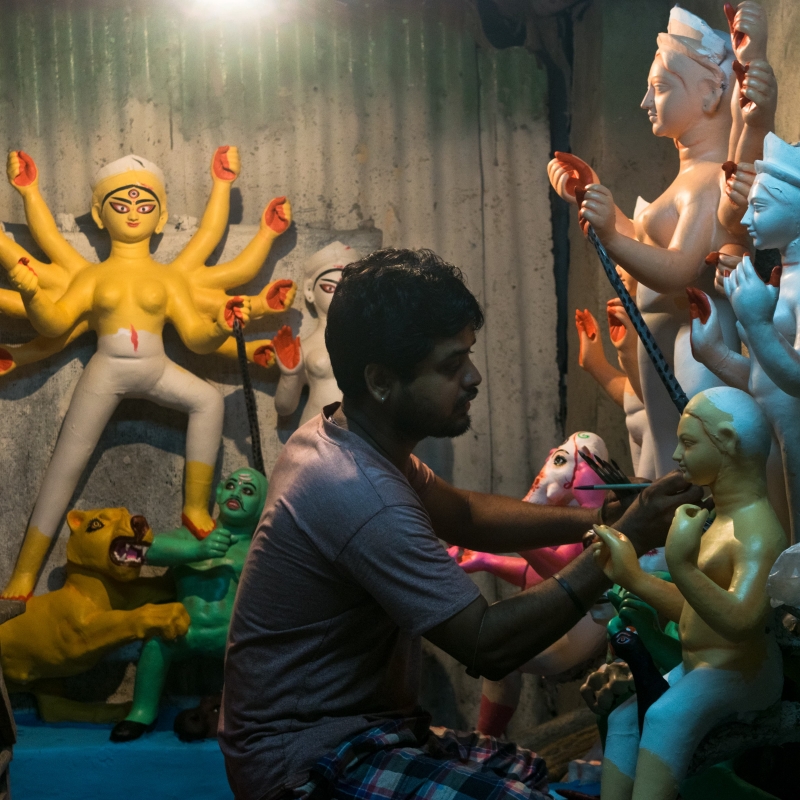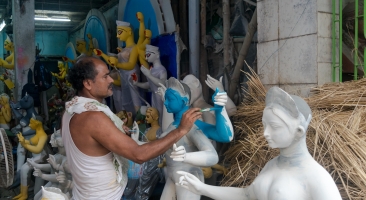Durga Puja is one of the most-awaited festivals for Bengalis around the world in the autumn month of Ashwin (Bengali calender, corresponding to September–October in the Gregorian calendar). In Kolkata this week-long festival is celebrated with much pomp and grandeur—idols of Goddess Durga and her children, Lakshmi, Saraswati, Kartik and Ganesh, are installed at exquisitely decorated pandals in neighbourhoods around the city, people buy and gift new clothes, queue up to visit the pandals, eat good food and make merry. The festival is also a celebration of craft and tradition, given that a lot of innovation and thought goes into the preparation of the same. Idol-making is one such aspect of the festival, and this module attempts to provide an insight into the goings-on in the narrow alleys of Kumortuli where around 500 kumors or potters are engaged in making clay idols of Goddess Durga.
Kumortuli is one such built space in the city of Kolkata which has imparted a new sense of identity to the city itself. The art of pottery and idol-making dates back many centuries, and therefore this neighbourhood and the people here have witnessed many socio-cultural changes. The art form itself has undergone a lot of changes over the years. The type of idols that are being made, the processes and the materials used are even more diversified today.



